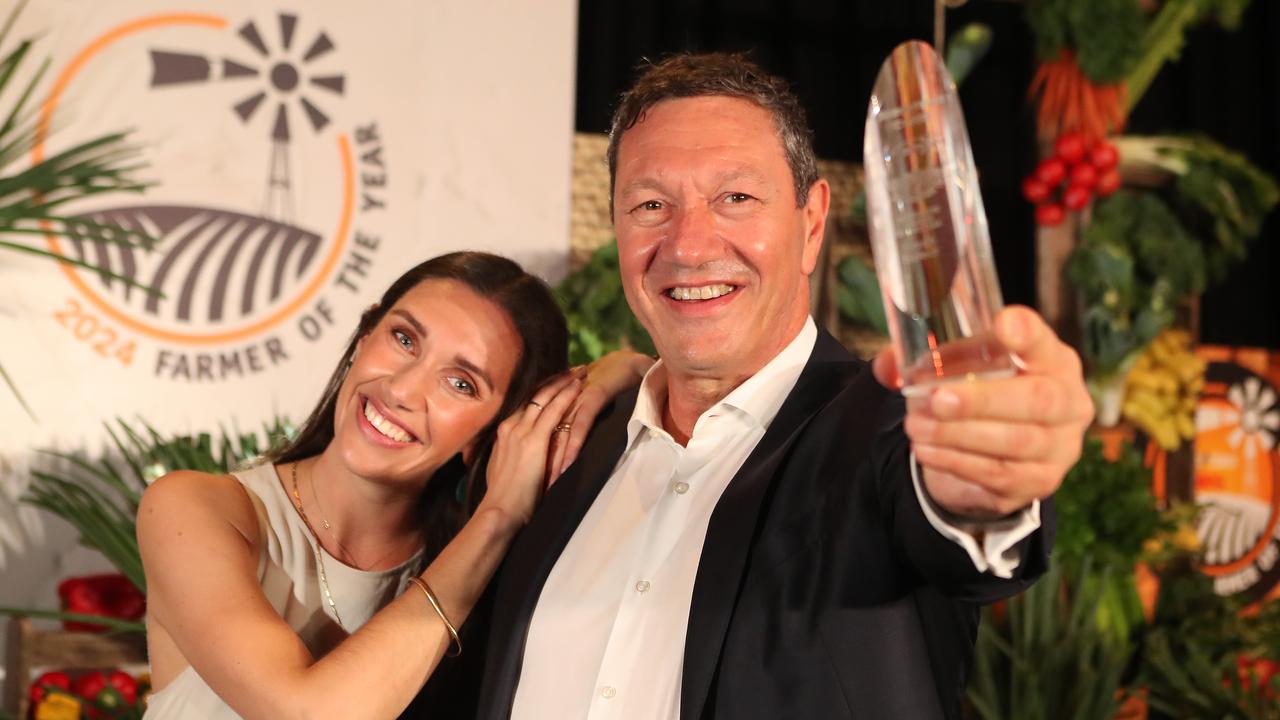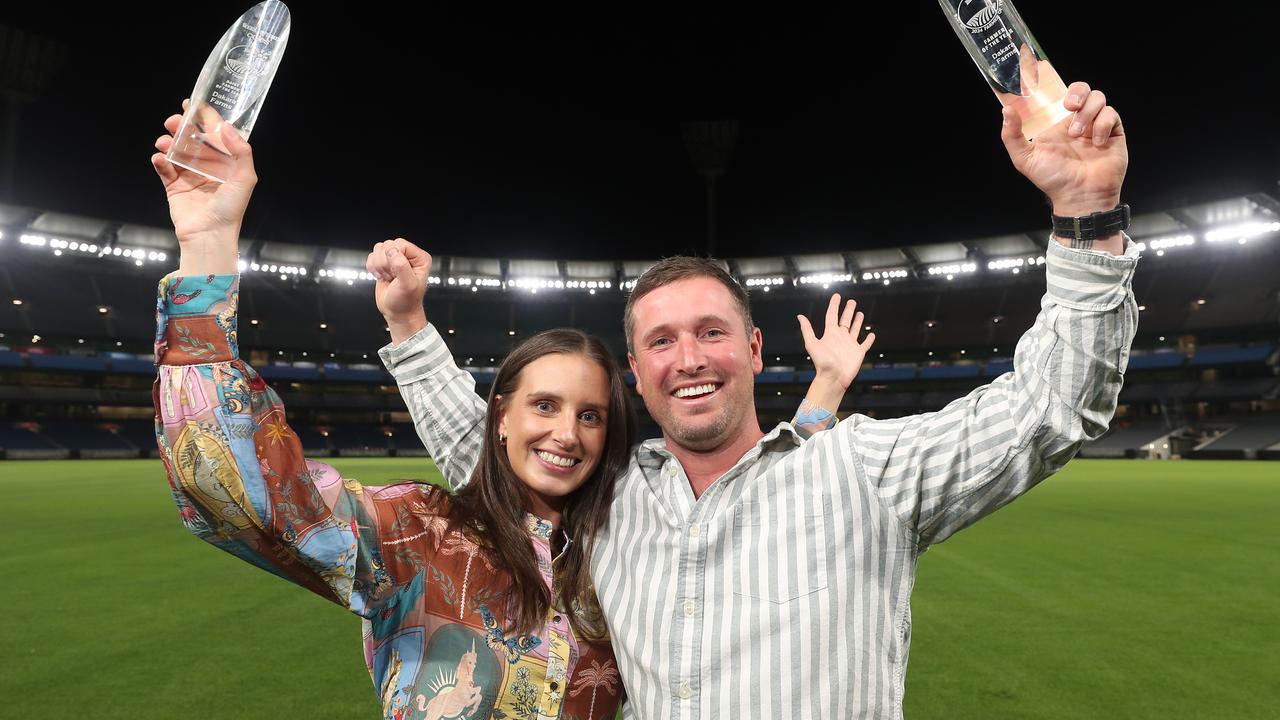Lambing rates on the up for Lawloit farmers Alan and Donna Bennett
ACHIEVING lambing rates of more than 120 per cent from terminal or maternal sheep breeds is one thing.

ACHIEVING lambing rates of more than 120 per cent from terminal or maternal sheep breeds is one thing.
But emulating that kind of success with pure Merinos in at-times marginal mixed-farming country in Victoria’s Wimmera region is another thing entirely.
“Normally I bank on 100 per cent, and we’ve consistently been getting 100 or better over the last 10 or 15 years … but this year was our best ever,” says Alan Bennett, who farms at Lawloit, between Nhill and Kaniva.
“The Merino ewes averaged 115 per cent, we had two mobs do 119 per cent and the 3½-year-olds went more than 120 per cent. It was an extreme result.”
Alan, who runs a 7800ha Merino, prime lamb and cropping operation with his wife, Donna, and their children, Ellen and Luke, puts the achievement down to a mixture of good fortune — 70mm of rain at joining time helped aid ewe cycling and conception rates — and management. This year, for the first time, the Bennetts pregnancy scanned their Merino ewes and accordingly managed with feed those bearing singles and multiples.
And the resulting 15 per cent jump in production couldn’t have been better timed, coinciding with this year’s strong producer returns for wool and sheepmeat.
IN THE MIX
THE Bennetts’ business, spread across several properties totalling 7800ha of owned and leased land, is an even split between crops and sheep. This year, about 2500ha of wheat, barley, canola and faba beans have been planted and 3300 ewes joined.
The home property at Lawloit averages 450mm of rain a year, 300mm of which falls during the crop growing season from autumn to spring.
This year they’ve received just 170mm of rain in the growing season, which Alan said was “not a lot” but significantly better than some other areas of western Victoria.
“Anything over 200mm we can still have a reasonable year,” Alan said.
The remainder of the Bennett country is made up of “a few different bits and pieces”, including 700ha of leased land as well as a large grazing property to the north on the edge of the Big Desert.
The soils at Lawloit comprise “a bit of everything”, including grey clays, duplex soils and non-wetting sands that have been clayed and delved, while the northern property is a mixture of non-wetting sands and clay.
RAISE THE BAA
IT’S these mixed soils — with lighter country “not great for cropping” — that have led the Bennetts to always run sheep.
Most of their ewes are Merinos, but for 300 Dorper ewes, which Alan said were in the “right place at the right time” when he needed to stock the Big Desert property. The purchase of that farm also led to increased emphasis on crossbred lambs, sired by White Suffolks and out of Merino ewes.
For the past 10-11 years the Merino rams have been sourced from the Glenlea Park Poll Merino stud at Pinnaroo in South Australia. Before then Glendonald, Gowandale and Bindawarra bloodlines were used.
Alan said he tried to pick rams with the “thickest and best-nourished wool”. While he takes note of their estimated breeding values — for which Glenlea Park has become renowned — he makes “the decision on the ram first”.
He bought four rams at Glenlea Park’s annual production sale last month, after nine last year.
He said prices depended on “where you want to operate”. Last year, when he bought the nine rams, he bid “down near the bottom” and averaged $1180 but this year he got fewer and was prepared to fork out more, up to $3400 — the most he’s ever paid for a flock ram.
The Bennetts also bought a ram from Hannaton Merino stud at Kaniva at this year’s Hamilton Sheepvention.
CYCLE OF LIFE
MERINOS are joined at a rate of two rams to every 100 ewes — “I won’t go under two, if I’m in doubt I’ll just put an extra ram in” — for seven to eight weeks from mid-January.
While Alan admits the joining period is probably “a bit long” compared to others, it’s a calculated strategy that works. “We shear in the middle of March and shear the rams at the same time, so it saves a muster,” he said.
This year, good rain in January coincided with the start of joining, meaning the ewes “cycled really well and conceived really well”.
After scanning, the ewes were run in mob sizes ranging from 170 to more than 400, according to whether they were bearing singles or multiples.
The main flock is shorn in March, with sheep cutting an average 7-8kg of 20.5-micron wool. Last year, for the first time, the Bennetts didn’t have a line of wool that tested stronger than 21 micron.
In the autumn, after shearing, the sheep are grazed on lucerne or early-sown feed in paddocks that “we want to get back into crop production”. The Bennetts have gone heavily into lucerne in recent years “to take advantage of the out-of-season rainfall”.
“Even this year, those January rains we got, the growth out of the lucerne was just amazing,” Alan said.
“It was like flicking a switch — a week later these brown paddocks turned green. And because the ground is so warm it just grows.”
Lambing kicks off in mid-June (timed to meet increased green feed) and this year — thanks to the good January rain and despite the longer joining period — all lambs arrived within the first three to four weeks.

STUBBLE RASH
LAMBS receive a backline drench just before harvest, which typically starts in November and winds up by January. They are crutched after harvest and grazed on crop stubbles.
“I try to get all the stock off the dryland lucerne over summer, otherwise it just gets flogged to death,” Alan said.
The Bennetts aim to do as little supplementary feeding as they can. Last year they cut frosted canola for hay, which they fed to the sheep during the autumn.
“It was about 9 per cent protein and 7ME (metabolisable energy) but just for the ewes after shearing — in their last trimester — it was perfectly adequate feed,” he said.
They do not shear their lambs in summer, opting to keep wool on them until they are eight months of age the following March.
“It works really well,” Alan said. “You’d think it wouldn’t and you’d be worried about yield and dust and flies (but you’re not).”
A month or so later the Merino wether lambs are sold over the hooks — last year they averaged almost $130.
The ewe lambs are shorn again in September at 15 months of age and for a third time the following March, which brings them into line with the rest of the flock. Alan said one benefit of this was the lack of a need for crutching during the spring.
“You just shear them,” Alan said. “We get 65-70mm worth of wool off them and it yields surprisingly well in the high 60s — some years we’ve even got to 70 per cent — and their tensile strength is amazing at 50-55 newtons per kilotex.”
Wool is sold through the Melbourne sales as soon “as it gets down to be tested”.
“I don’t try and pick the market,” he said. “If it’s good it’s good, if it’s not it’s not — you just get on with the show.”
CHOP AND CHANGE
SURPLUS one-year-old ewes are joined to White Suffolk rams in the spring to produce an autumn-drop lamb.
The ewes are shorn with 12 months’ wool in September and then sold as 2½-year-old proven breeders.
Alan said he wasn’t a big “figures man” when it came to selecting his White Suffolk rams. “I just want to get them in and get the job done … a lot of it has got to do with feed,” he said.
He said his prime lamb enterprise had been ramped up this year with the purchase of more country.
The first draft of lambs sold as suckers through the Horsham saleyards during the first week of September.
Another “couple of hundred — not as many as I should have” — are locked in for sale over the hooks at $6/kg carcass weight.
Alan grows faba beans, which are fed to the lambs, but admitted he wasn’t “a big one for hanging on to crossbred lambs”. “If they get to this time of year and you get $100 for them, I reckon you take the money and run,” he said. “Sometimes (as farmers) we’re our own worst enemies a bit, we try and get that extra $5 or $10 out of them. And you rarely get it. I’d rather put my time and effort into my Merino lambs.”

SOWING MACHINE
THE Bennetts’ cropping program of 3800ha comprises 2500ha of crops for harvest and 1300ha for sheep feed.
Wheat, barley, faba beans and canola are sown for grain with cereals such as Commander barley and Rosella wheat, as well as vetch, sown purely for sheep consumption.
Alan works on the theory that “if you want sheep feed, you’ve really got to sow it and treat it like a crop”.
The sowing program normally starts in early April for a five to six-week harvest starting in late November. “A long harvest is a good harvest — no one enjoys a short one,” he noted.
Barley or canola for grain is generally harvested first while the Bennetts jump at the chance to strip their faba beans early, too, because “once you leave them too long, they’re a lot harder to harvest and the plant dries out”.
Long-term average yields are slightly more than 3.5 tonnes/ha for cereals and 1.8 tonnes/ha for canola. Last year faba beans averaged 1.5 tonnes/ha. When it comes to marketing the crop, Alan does “a bit of everything”, selling some at harvest for cashflow but using a grain broker for the bulk of it, meaning “there are no decisions made at the silo”.
CONTRACT HIT
ALAN employs contractors when it comes to hay production, the claying and delving of sands and with freight at harvest. The Bennetts employ one worker in addition to Luke working full-time on the farm and Ellen being home on a gap year.
Two years ago the family bought a spreader and since then have done all their own urea, superphosphate and gypsum spreading.
“With urea spreading, it makes the nitrogen decisions a lot easier,” Alan said. “If you’ve got your own spreader, you can say, ‘Righto, we’ll go out and do a few paddocks at 50kg (/ha). We’ll do a bit now and see what the weather does,’ whereas if you’ve got a contractor they’re inclined to say, ‘We’ll do a heap and we’ll do it at 80kg (/ha) and try and get one bite of the cherry’.”
Alan said while there was more work involved in sheep production, there was also less risk.
“You can do your sums and know you’re going to be somewhere near it, regardless of the season,” he said. “You mate 1000 ewes and you know you’re going to get 1000 lambs and they’re going to be worth $100 a head, and the ewe’s going to cut its $40 worth of wool. Whereas you can say you’re going to sow 1000ha of crop, but what are you going to get?”


